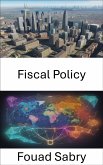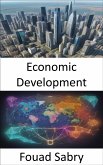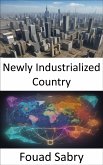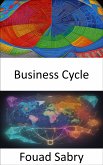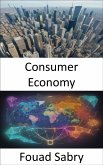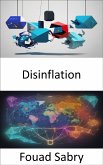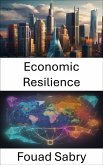What is Poverty
Poverty may be defined as a state or circumstance in which an individual does not possess the necessary supplies and financial resources to maintain a particular level of living. The causes and effects of poverty can vary greatly depending on the social, economic, and political context. There are two primary ways to evaluate poverty in the fields of statistics and economics: absolute poverty is a comparison of a person's income to the amount required to meet fundamental personal needs, such as food, clothing, and shelter; relative poverty is a measurement of the degree to which a person is unable to meet a minimum level of living standards in comparison to others experiencing the same situation at the same time and location. From one nation to another, or even from one community to another, the concept of relative poverty can be understood in a variety of ways.
How you will benefit
(I) Insights, and validations about the following topics:
Chapter 1: Poverty
Chapter 2: Extreme poverty
Chapter 3: Developing country
Chapter 4: Poverty threshold
Chapter 5: Economic inequality
Chapter 6: Recession
Chapter 7: Poverty reduction
Chapter 8: Poverty in Australia
Chapter 9: International inequality
Chapter 10: Poverty in India
Chapter 11: Income inequality in the United States
Chapter 12: Poverty in China
Chapter 13: Poverty in Canada
Chapter 14: Poverty in the United States
Chapter 15: Rural poverty
Chapter 16: Causes of poverty
Chapter 17: Income inequality in India
Chapter 18: Poverty in the Philippines
Chapter 19: Poverty gap index
Chapter 20: Poverty in New Zealand
Chapter 21: Wealth inequality in Latin America
(II) Answering the public top questions about poverty.
(III) Real world examples for the usage of poverty in many fields.
Who this book is for
Professionals, undergraduate and graduate students, enthusiasts, hobbyists, and those who want to go beyond basic knowledge or information for any kind of poverty.
Poverty may be defined as a state or circumstance in which an individual does not possess the necessary supplies and financial resources to maintain a particular level of living. The causes and effects of poverty can vary greatly depending on the social, economic, and political context. There are two primary ways to evaluate poverty in the fields of statistics and economics: absolute poverty is a comparison of a person's income to the amount required to meet fundamental personal needs, such as food, clothing, and shelter; relative poverty is a measurement of the degree to which a person is unable to meet a minimum level of living standards in comparison to others experiencing the same situation at the same time and location. From one nation to another, or even from one community to another, the concept of relative poverty can be understood in a variety of ways.
How you will benefit
(I) Insights, and validations about the following topics:
Chapter 1: Poverty
Chapter 2: Extreme poverty
Chapter 3: Developing country
Chapter 4: Poverty threshold
Chapter 5: Economic inequality
Chapter 6: Recession
Chapter 7: Poverty reduction
Chapter 8: Poverty in Australia
Chapter 9: International inequality
Chapter 10: Poverty in India
Chapter 11: Income inequality in the United States
Chapter 12: Poverty in China
Chapter 13: Poverty in Canada
Chapter 14: Poverty in the United States
Chapter 15: Rural poverty
Chapter 16: Causes of poverty
Chapter 17: Income inequality in India
Chapter 18: Poverty in the Philippines
Chapter 19: Poverty gap index
Chapter 20: Poverty in New Zealand
Chapter 21: Wealth inequality in Latin America
(II) Answering the public top questions about poverty.
(III) Real world examples for the usage of poverty in many fields.
Who this book is for
Professionals, undergraduate and graduate students, enthusiasts, hobbyists, and those who want to go beyond basic knowledge or information for any kind of poverty.
Dieser Download kann aus rechtlichen Gründen nur mit Rechnungsadresse in A, B, BG, CY, CZ, D, DK, EW, E, FIN, F, GR, H, IRL, I, LT, L, LR, M, NL, PL, P, R, S, SLO, SK ausgeliefert werden.



